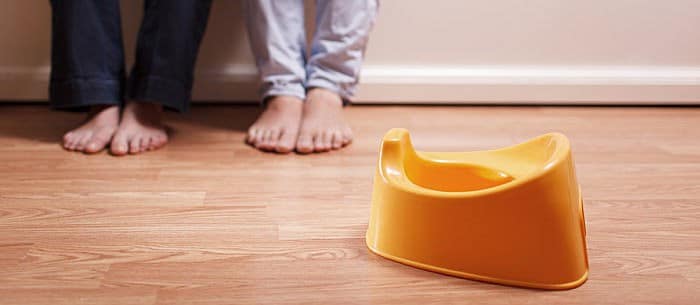When it comes to potty training, everyone seems to have an opinion. Your mom heard that bribing with candies worked for the neighbor’s nephew, but your coworker swears you should do the opposite and let the kid’s motivation drive him — it worked for her kids!
As you weed through all the advice, knowing what not to do is just as important as knowing what you should do. For example, it’s not a good idea to start potty training after your child has a big change, such as getting a new sibling, a change of caregivers, or saying goodbye to the pacifier, says Nicole Pourchier, an early childhood education professor and a co founder of “The Potty Rocker.” Another no-no? “Trying to train a child who is not developmentally ready. Kids have to want to do it, otherwise it will be a miserable experience for everyone,” says Pourchier.
Here are a few common myths and tips for what really works:
- Potty Training Myth
If you don’t start early enough, you’ll miss the window of opportunity and kids will then be too stubborn to train.What You Should Do: There’s a lot of pressure on parents to get kids trained early. Whether it’s a deadline for preschool or Aunt Edna won’t stop telling you your tot is too old for diapers, everyone seems to want kids trained at a young age. The problem is that not all kids have the language, fine motor control or sphincter muscle strength to potty train at a specific age, says Lisa Poelle, an early childhood education consultant and public speaker who has worked with families and child care programs around the country on topics such as toilet training, biting and fighting. Age should not factor into when to start training a child. Instead, the American Academy of Pediatrics suggests that you look for cues to gauge your child’s readiness. Signs like a sudden interest in the potty and the ability to dress and undress himself are good indicators that it’s time to ditch the diapers.
- Potty Training Myth
You should put your child on the potty every 30 to 60 minutes throughout the day, even if he says he doesn’t have to go.What You Should Do: Putting your child on the potty when he doesn’t have to go only serves to create a power struggle and also confuses your child, says Poelle. If his diaper is typically dry for one to two hours (another sign of potty readiness), then he won’t need to go to the bathroom every half hour. Instead, model appropriate behavior. Be clear and demonstrative in your language and actions, says Poelle. For example, she suggests that you put a hand on your abdomen say, “I feel like some pee (or poo) might be ready to come out so I am going to go in to the bathroom to check.” Invite your child to come along and after you are finished, smile and mention how you feel so much better now.
- Potty Training Myth
It’s all about rewards. You need to go over the top with praise, presents and stickers in order to entice your child to keep with it.What You Should Do: Rather than overdoing the praise, react in a happy way for them, but don’t go overboard. Too much praise turns the experience into a high-pressure situation. Learning to go on the potty is another step in growing, like eating with a fork or sleeping in a bed, says Poelle. Instead, present a neutral tone when asking if they need to go, and give gentle praise when they do their business on the potty.
- Potty Training Myth
You can toilet train in a weekend.What You Should Do: You may hear boasting from parents that it happened in a weekend. Truth be told, learning when it’s time to go is not easy. Your little one has to learn a lot of physical cues: feeling the pressure in his abdomen, stopping what he’s doing, holding it until he reaches the loo, maybe dealing with buttons and zippers and then the actual “going” — it’s a lot, says Poelle. Instead of worrying about timing (“It’s been two weeks, why isn’t he getting this?”) remember to be patient.
In the end, as much as you may want your child trained right now it will happen when it happens. “When parents are stressed, these emotions carry over to their children. Sometimes it may seem like they’re oblivious, but kids pick up on our energy and it affects them directly,” says Pourchier. So watch for the cues and buy the new underwear, but don’t force the training. As the old adage goes, nobody goes to college still in diapers.
For more tips about this milestone, check out How to Potty Train a Reluctant Child and Potty Training Tips: How to Win the Potty Wars.
Judy Koutsky is the former Editorial Director of KIWI magazine, a green parenting publication. She was also Executive Editor of Parenting.com, AOL Parent and BabyTalk.com. Follow her on twitter





